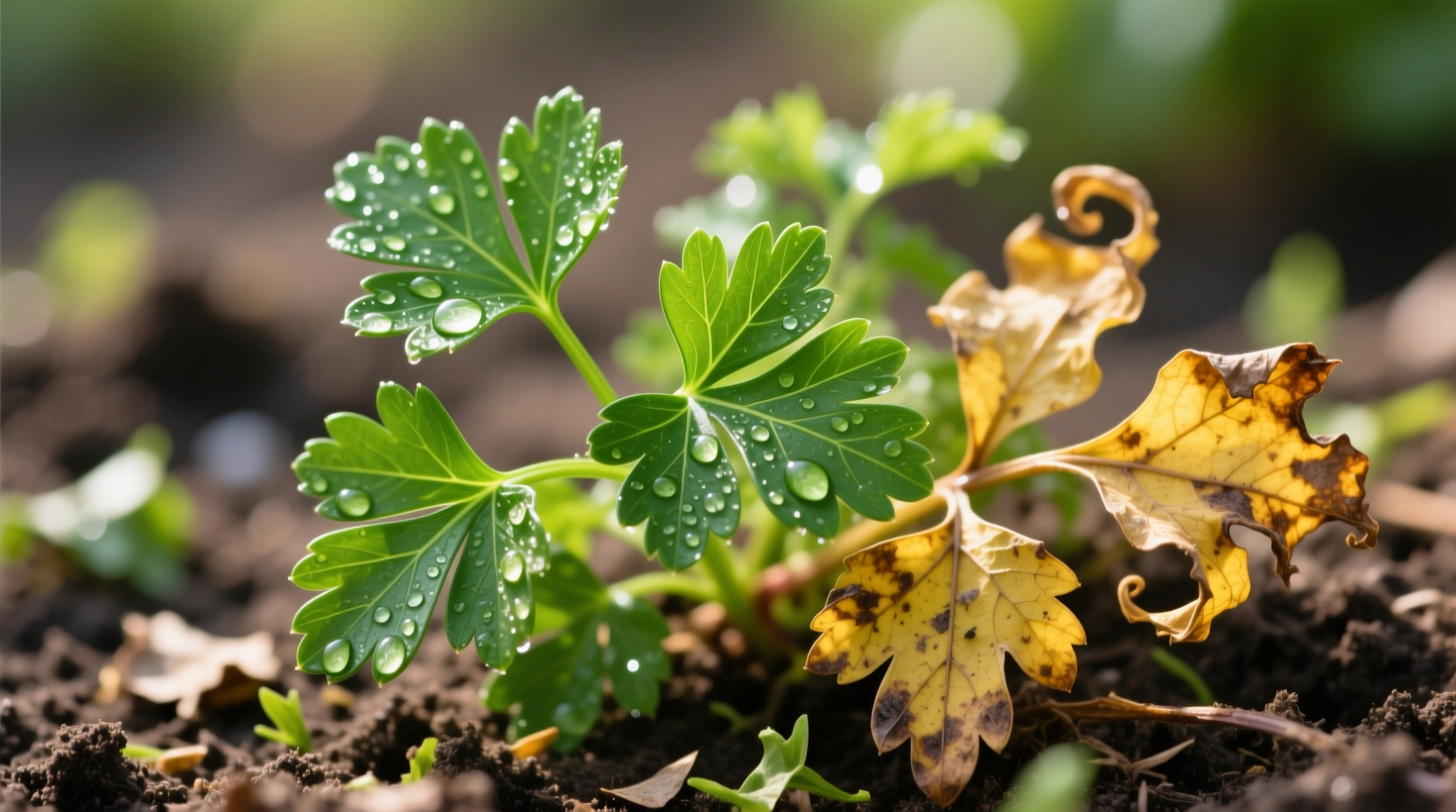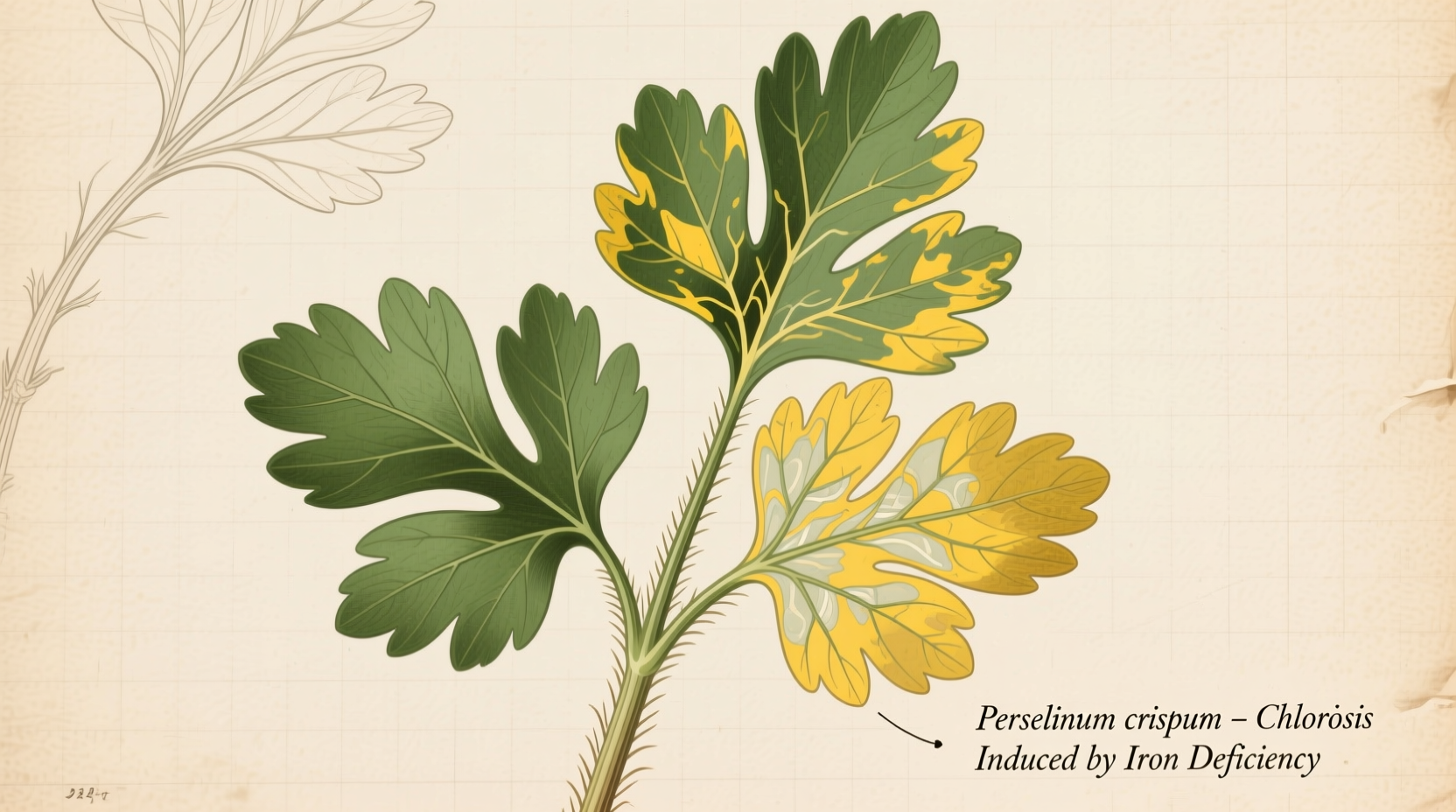Why Your Parsley Leaves Are Turning Yellow: A Complete Diagnostic Guide
Discovering yellow leaves on your parsley plant can be alarming, especially when you're counting on fresh herbs for your kitchen. The good news is that yellowing parsley is usually fixable with proper diagnosis. In this guide, you'll learn exactly what's causing your parsley to turn yellow and get actionable solutions that work.
Understanding Parsley's Natural Physiology
Parsley (Petroselinum crispum) is a biennial herb that naturally develops some yellowing in its second year as part of its life cycle. However, premature yellowing in first-year plants signals stress. Healthy parsley should maintain vibrant green foliage throughout the growing season when properly cared for.
The 7 Most Common Causes of Yellowing Parsley
Identifying the specific cause is crucial for effective treatment. Here's a comprehensive breakdown of what might be affecting your parsley:
| Cause | Key Symptoms | Most Affected Plant Parts | Time to Notice Improvement |
|---|---|---|---|
| Overwatering | Yellow leaves with brown edges, wilting despite wet soil | Lower leaves first, progressing upward | 7-10 days after correction |
| Nitrogen deficiency | Uniform yellowing, stunted growth | Older leaves turning yellow first | 5-7 days with proper feeding |
| Poor drainage | Yellowing with root rot signs, waterlogged soil | Entire plant yellowing rapidly | 10-14 days after soil improvement |
| Iron deficiency | Yellow leaves with green veins | New growth yellowing first | 3-5 days with chelated iron |
Step-by-Step Diagnosis Process
Follow this systematic approach to identify why your parsley is turning yellow:
1. Check Your Watering Habits
Overwatering causes 65% of yellowing parsley cases according to UC Davis Agricultural Extension research. Stick your finger 2 inches into the soil. If it feels moist, wait to water. Established parsley needs watering only when the top inch of soil dries out. Container plants typically need watering every 3-4 days in summer, less frequently in cooler months.
2. Assess Soil Drainage Quality
Poor drainage leads to root suffocation. Perform this simple test: Water your parsley normally, then check soil drainage after 1 hour. If water pools on the surface or soil remains soggy, you have drainage issues. Amend garden soil with 30% compost and perlite. For containers, ensure adequate drainage holes and use a potting mix specifically formulated for herbs.
3. Identify Nutrient Deficiencies
Nitrogen deficiency shows as uniform yellowing, while iron deficiency creates yellow leaves with green veins. University of Massachusetts Amherst research indicates that parsley requires balanced nutrition with emphasis on nitrogen during vegetative growth. Apply a balanced organic fertilizer (5-5-5) every 4-6 weeks during growing season, or use compost tea for a gentler nutrient boost.
4. Examine for Pest Damage
Aphids and spider mites can cause yellow stippling on leaves. Inspect the undersides of leaves with a magnifying glass. If pests are present, spray with insecticidal soap solution (2 tablespoons soap per quart of water) every 5-7 days until eliminated. Introduce beneficial insects like ladybugs for ongoing pest control.
Effective Treatment Strategies for Yellowing Parsley
Once you've diagnosed the problem, implement these targeted solutions:
For Overwatered Parsley
Stop watering immediately and allow soil to dry completely. Trim severely yellowed leaves but preserve green growth. For container plants, consider repotting with fresh, well-draining mix. Water only when the top inch of soil feels dry to the touch.
For Nutrient Deficiencies
Apply a liquid seaweed fertilizer which contains trace minerals including iron. For nitrogen deficiency, use fish emulsion (1-2 tablespoons per gallon of water) every 10 days. Organic gardening research from Cornell University shows that foliar feeding provides faster results for correcting nutrient deficiencies in herbs.
Preventing Future Yellowing Issues
Implement these preventative measures to maintain healthy green parsley:
- Use well-draining soil with 30% organic matter
- Water deeply but less frequently to encourage deep root growth
- Apply 1-2 inches of organic mulch to regulate soil moisture
- Fertilize monthly during active growth with balanced organic fertilizer
- Ensure plants receive 6-8 hours of sunlight daily

When to Replace Your Parsley Plant
While most yellowing parsley can be revived, some situations warrant replacement:
- Severe root rot where more than 50% of roots are mushy and black
- Complete yellowing with no remaining green growth after 2 weeks of treatment
- Second-year plants showing natural decline (parsley is biennial)
When replanting, rotate to a new location if possible to prevent soil-borne disease buildup. Start with fresh, disease-free soil and space plants 8-10 inches apart for proper air circulation.
Harvesting and Using Slightly Yellowed Parsley
Lightly yellowed parsley is generally safe to eat if the cause was water-related rather than disease. Remove completely yellowed leaves and use only the green portions. Wash thoroughly and use promptly, as compromised leaves deteriorate faster. According to food safety guidelines from the USDA, herbs with minor discoloration but no mold or foul odor remain edible.











 浙公网安备
33010002000092号
浙公网安备
33010002000092号 浙B2-20120091-4
浙B2-20120091-4